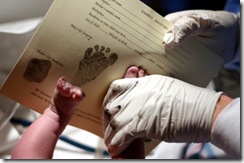Note: there are some great X chromosome inheritance charts below – if you are unable to see them, be sure to click through to the original post!
Edit (06/17/2014) – Brighter, cleaner charts added below!
Most genetic genealogists have sent away their cheek swabs to learn about their mitochondrial DNA or their Y-DNA lines. Others have explored their autosomal DNA for ancestral information, a field that is growing quickly and will undergo rapid changes as the price of sequencing continues to fall.
Now genetic genealogists are beginning to discover the ancestral information locked away in the X chromosome. Indeed, X chromosome tests have been offered by companies such as Family Tree DNA for a number of years. Armed with some of this information as well as the advent of SNP chip information from 23andMe and deCODEme, genetic genealogists are making new discoveries in this very young arena.



 Last week, Randy Seaver of Genea-Musings
Last week, Randy Seaver of Genea-Musings 


 Many people do not realize that the genetics of the future will rely heavily on the work done by previous, current, and future generations of genealogists. Researchers hoping to uncover links between a disease and a particular gene or mutation often recruit entire families or use compiled genealogical databases for information. Just a few of the recent examples of researchers benefiting from the work of genealogists include:
Many people do not realize that the genetics of the future will rely heavily on the work done by previous, current, and future generations of genealogists. Researchers hoping to uncover links between a disease and a particular gene or mutation often recruit entire families or use compiled genealogical databases for information. Just a few of the recent examples of researchers benefiting from the work of genealogists include: